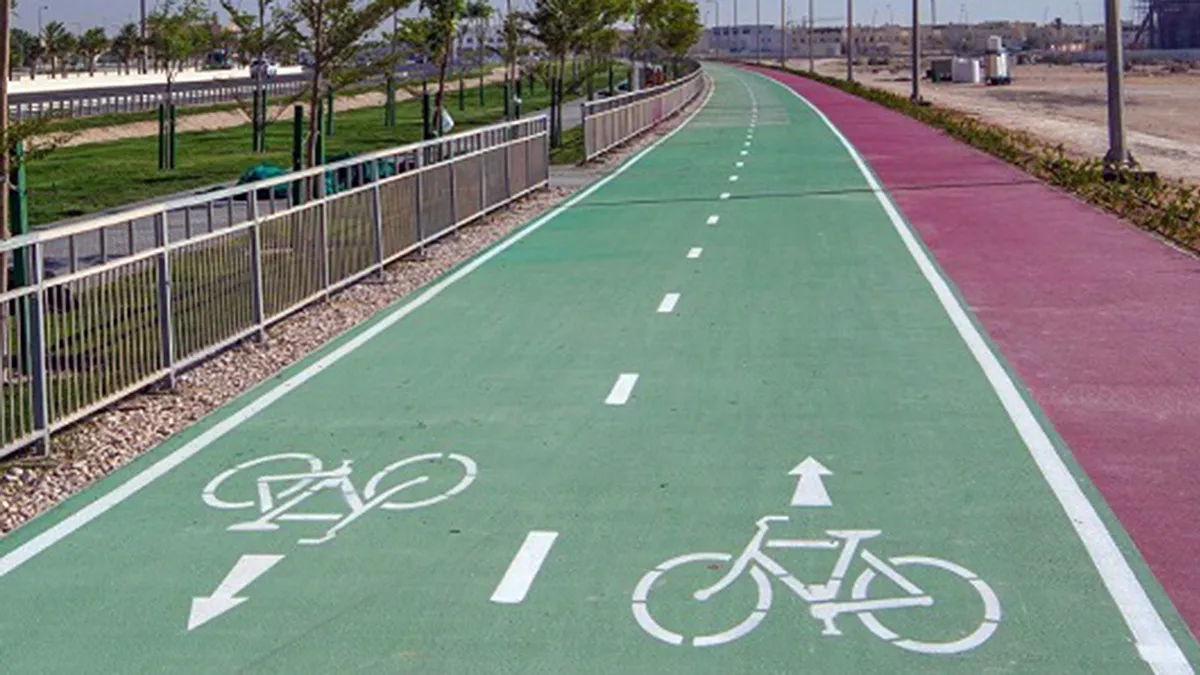Updated land transportation policies under Transportation Master Plan for Qatar 2050 encourage non-motorised transport
07 Jan 2023
News
According to Updated Transportation Master Plan for Qatar published by the Ministry of Transport on its website, there exist 60 policies for land transportation in TMPQ requiring 287 policy actions. The policies have been divided under different policy topics.
The updated land transportation policies, set under Transportation Master Plan for Qatar 2050 (TMPQ), encourage non-motorised transport, including walking, cycling and small-wheeled transport, in order to reduce congestion, pollution levels and promote physical activity.
The TMPQ works as a roadmap for investing in land transportation infrastructure and also identifies the frameworks and future orientations for developing the transportation networks nationwide in a way that ensures their integration with land uses, urban development, population growth and meeting the future demand for transportation.
The non-motorised policies, under TMPQ land transportation, aim to encourage non-motorised transport, including walking, cycling and small-wheeled transport, in order to reduce congestion, pollution levels, and promote physical activity and health and environmental benefits. “This includes policies to shift travelers to more sustainable short trip and last mile solutions.”
Qatar has already implemented many infrastructure projects in recent years to promote non-motorised transport. The Public Works Authority (Ashghal) developed a total of 2,131km pedestrian and cycling tracks between 2013 and 2022.
Meanwhile, environmental policies are designed to produce environmental improvement and decrease climatic impact, by cutting vehicle emissions of carbon monoxide, carbon dioxide, other noxious gases and particulates, reducing noise pollution and improving air quality and the health of residents, by the promotion of clean technologies.
The governance and coordination policies are designed to introduce more efficient procedures for coordination between different government agencies and departments involved in transportation planning and policy at all levels. The freight movement policies cover the movement of goods to/from/within Qatar, including heavy and light goods, perishables, dangerous goods, etc., which includes development of a truck route network. “There are also policies in respect to regulations which cover vehicle ownership, and unsafe and overloaded vehicles.”
The transport and land use policies relate to the orderly control and planning of new developments. They are designed to improve coordination between agencies and promote integration of transportation and land use planning, particularly for major developments, and to establish mechanisms for developer contributions to transportation infrastructure.
The safety and security policies relate to improvement in the overall safety and security of Qatar’s transportation system, including laws related to seatbelt usage, mobile phone usage, vehicle import controls, and de-registering ageing vehicles.
The policies relating to technology have been designed to integrate Qatar’s transportation system of intelligent transport technology, ‘smart’ cards, intelligent sensors and detection equipment, traveller information systems, variable message signage. It also includes a comparison with ITS initiatives in other Gulf Cooperation Council (GCC) countries.
The policies developed for highways are designed to optimise usage of the existing highway network and capacity, to maintain the assets, to adapt them for a wider usage by public transport and other sustainable modes, and to safeguard the introduction of future technologies. The public transport policies are designed to enhance existing public transport services and network coverage, in turn to encourage mode shift from the private car, and the offering of alternative travel options.
Also covered is improving service quality and frequency on the public bus network, performance monitoring, improving cost recovery, and public transport priority. The multi-modal policies cover connections between various modes (public transport, private vehicle, walking and cycling), employing such measures as planning and design of interchanges from the viewpoint of integration of all modes, promotion of integrated ticketing, inclusion of multi-modal accessibility at major developments and a national control centre to coordinate all modal operations.
